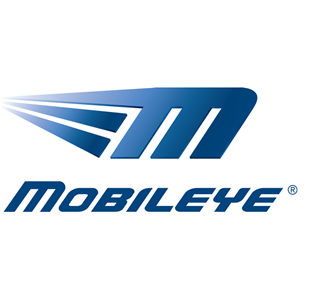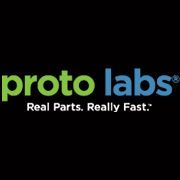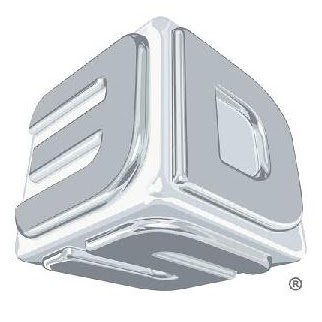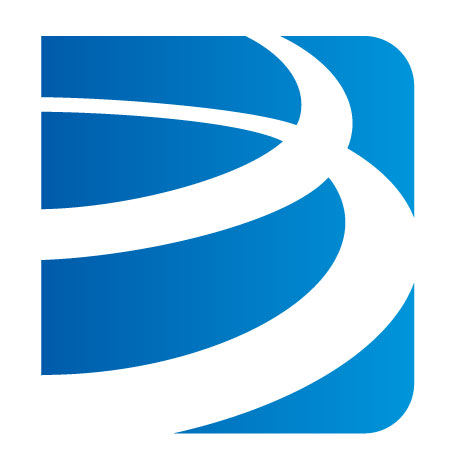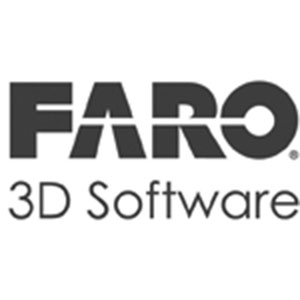Year: 2016
Twitter: Obstacles to Overcome
 As of this writing in late December, Twitter (NYSE: TWTR) continues to struggle, relative to its internet advertising peers Facebook (NASDAQ: FB) and Google (NASDAQ: GOOGL). Despite a flurry of activity in the fall, during which the company was rumored to be on the auction block, the stock has floated back down to earth, and then some, as investors consider several ongoing challenges faced by the company. Among these are persistent management turnover, a struggle to rekindle user growth, and what we perceive to be mediocre earnings quality.
As of this writing in late December, Twitter (NYSE: TWTR) continues to struggle, relative to its internet advertising peers Facebook (NASDAQ: FB) and Google (NASDAQ: GOOGL). Despite a flurry of activity in the fall, during which the company was rumored to be on the auction block, the stock has floated back down to earth, and then some, as investors consider several ongoing challenges faced by the company. Among these are persistent management turnover, a struggle to rekindle user growth, and what we perceive to be mediocre earnings quality.
Management Turnover Continues
In the first 18 months following its IPO in November of 2013, Twitter was plagued by rampant management turnover, including a 60-day interval, during which three of the top five executives listed in its S-1 filing resigned or were reassigned to new posts in the company. Jack Dorsey, Twitter’s Chairman and co-founder, became CEO in October of 2015, and, until recently, management turnover had stabilized.
On November 7th Twitter COO Adam Bain informed the company of his decision to resign, after a six year stint, which featured a role as head of advertising sales. Two days later, Twitter announced that it had appointed CFO Anthony Noto as COO. Noto will continue in a dual role as COO and CFO until a new CFO is hired. The COO position is crucial, as Twitter’s CEO Jack Dorsey continues to split his time between Twitter and Square, another company that he co-founded. Noto, who had been in charge of live content, in addition to his CFO responsibilities, is now in charge of global advertising sales, data, MoPub, as well as global partnerships and business development.
Then on December 20th, Twitter’s chief technology officer, Adam Messinger, resigned. On the same day, Twitter’s VP of product, Josh McFarland let it be known that he was leaving the company to join a venture capital firm.
Working to Rekindle User Growth
Twitter reported its lowest-ever rate of year over year revenue growth in Q3 2016, as advertising sales rose just six percent over the prior year. This was the seventh consecutive quarter that sales growth declined. Monthly active users (MAUs) grew by just three percent in the last quarter. In addition, the company has, for several years, declined to report the number of daily active users, which are suspected to be considerably lower than its 317 million MAUs.
Twitter is working behind the scenes to induce users to utilize the service more frequently. Efforts underway include the addition of new content, such as Thursday Night Football, as well as the application of machine learning and artificial intelligence to improve the user experience, particularly in the area of notifications, and home timeline, where the majority of user time is spent. The company is focusing in particular on improving the relevance of user notifications, and emphasizing topics and interests, rather than following people per se, as methods to improve user engagement.
Earnings Quality Remains Poor
Like most VC-backed West Coast technology companies, Twitter utilizes a healthy dose of stock-based compensation, which reduces the near term cost of compensating employees, but passes the longer term cost along to shareholders, who are left to absorb the increased issuance of stock in the form of reduced earnings per share, once the options grants are exercised. In the third quarter of 2016, stock-based compensation accounted for 32 percent of gross operating expenses. SBC is particularly noteworthy within research and development, where it accounted for 49 percent of gross research and development expenses in the third quarter.
Another area of concern regarding Twitter’s EBITDA presentation is how it accounts for research and development costs. Twitter continues to capitalize, rather than expense, a considerable portion of its research and development costs. While this is a perfectly legal practice, we believe R&D costs should be expensed in the period in which they are incurred, rather than capitalized as assets that can be amortized later through COGS, at which point the non-cash amortized expense is viewed by many to be inconsequential.
Twitter continues to languish relative to its internet advertising peers. Our sense is that the company still has obstacles to overcome, as its management ranks continue to shift, user growth remains tepid, and the company’s earnings quality remains low.
Veeva Systems: Expanding into Clinical Trials
 The most significant development in the clinical trial software market is the recent expansion of Veeva Systems (NYSE: VEEV), which until recently had made only a light-hearted effort to address the market. As part of its previous strategy, Veeva had partnered with Medidata Solutions (NASDAQ: MDSO) in an alliance which recognized Oracle (NASDAQ: ORCL) as a common enemy. Veeva, whose strength stems from selling sales force automation software to large drug and biotech companies, including 24 of the 25 largest world-wide, has, in the last two years, set its sites on the research and development activities of the large drug companies, with a series of new database applications.
The most significant development in the clinical trial software market is the recent expansion of Veeva Systems (NYSE: VEEV), which until recently had made only a light-hearted effort to address the market. As part of its previous strategy, Veeva had partnered with Medidata Solutions (NASDAQ: MDSO) in an alliance which recognized Oracle (NASDAQ: ORCL) as a common enemy. Veeva, whose strength stems from selling sales force automation software to large drug and biotech companies, including 24 of the 25 largest world-wide, has, in the last two years, set its sites on the research and development activities of the large drug companies, with a series of new database applications.
About four months ago Veeva Systems announced its intent to introduce a clinical trial management system, or CTMS, in the first quarter of 2017. This builds upon the success of the company’s eTMF and Vault Study Startup applications geared to the clinical side of enterprise content management. However, Veeva had not announced plans for an electronic data capture or EDC application, which is often seen as an essential ingredient for a fully-functioning clinical trial system. Instead, Veeva worked alongside Medidata, whose Rave EDC product is well entrenched in many large pharma accounts.
Recently, however, Veeva announced its intent to deliver a cloud-based EDC application, Veeva Vault EDC, which it expects to be available in April of 2017. In doing so, Veeva intends to build on its base of 120 clinical operations customers, which include deployments of its Veeva Vault eTMF in seven of the top 20 pharma companies. Veeva also announced that it will unveil Veeva Vault eSource, a mobile app for clinical trials, by the end of 2017.
Undoubtedly, Veeva Systems faces challenges in penetrating the market, not the least of which is the fact that its strongest relationships in the in the pharma industry have previously been confined to the sales, customer service and IT management sides of the business. Veeva has, however, sold at least one Vault module to at least 34 of the top 50 global pharma companies, and Veeva has an opportunity to expand within the R&D group, which has significant input into clinical trial software selection. Veeva also has the opportunity to approach a new set of customers in the CRO industry.
In summary, we believe that the recent expansion of Veeva into clinical trials holds much promise for the California-based company, and suggests greater ambitions to address the research and development needs of life sciences companies.
Mobileye: Behind the Delphi Automotive Partnership
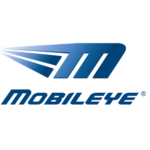 While much attention has been focused on Mobileye’s (NYSE: MBLY) decision to dissolve its OEM supplier relationship with Tesla Motors (NASDAQ: TSLA), a more important development in our opinion is Mobileye’s decision to work more closely with Delphi Automotive (NYSE: DLPH) on a new OEM solution focused on autonomous driving.
While much attention has been focused on Mobileye’s (NYSE: MBLY) decision to dissolve its OEM supplier relationship with Tesla Motors (NASDAQ: TSLA), a more important development in our opinion is Mobileye’s decision to work more closely with Delphi Automotive (NYSE: DLPH) on a new OEM solution focused on autonomous driving.
On August 23rd Mobileye announced a new partnership with Delphi Automotive PLC (Delphi hereafter), one of its largest Tier One customers, with whom it has been working for over ten years. The new arrangement envisions the creation of a turnkey autonomous driving package for the most advanced stages of driving automation. A major focus for Delphi is electronics and safety, a business segment through which it provides software, systems, and components for car passenger security, comfort and safety, including passive and active safety electronics, displays, and mechatronics. Delphi’s products for ADAS include technology provided by Mobileye, as well as a number of other suppliers, whose products range from radar, camera systems, and software, to sensors.
Like many of Mobileye’s Tier One customers, Delphi has been working on various initiatives relating to advanced driver assisted and driverless car features. A little more than a year ago, Delphi acquired Ottomatika, a Carnegie Mellon University spin-out, to enhance its active safety and automated driving capabilities. Delphi is now in the process of integrating Ottomatika’s automated driving software into its active safety systems to create a platform to make human-like decisions. Delphi also made an equity investment in Quanergy in order to develop low-cost, high performance solid state LiDAR products that will provide a complete vehicle perception solution for Level 3 and Level 4 automation applications for semiautonomous or driverless vehicles.
A key part of the agreement between Mobileye and Delphi calls for the companies to combine efforts on machine learning to create a new class of machine intelligence that mimics human driving, including ways for a driverless car to negotiate with other vehicles to merge into urban traffic, a key challenge for achieving real-world automated driving. Under the terms of the agreement, the two companies will work toward creating a full turn-key package for Level 4 and Level 5 automation by 2019. Beginning at the Consumer Electronics Show in January, the companies plan to demonstrate a prototype vehicle. Fleet testing is slated to begin in 2017.
Even though Delphi is a Mobileye customer, Delphi’s R&D projects raised the suspicion in our minds that the companies might compete against one another in the future. However, the new partnership makes clear that the two will be coordinating their efforts for a number of reasons, not the least of which is a common competitive threat, as each company seeks to blunt the impact of Continental AG and Robert Bosch Group, two German-based Tier One automotive suppliers, both of whom have ambitious driver assisted technology initiatives underway. Since Bosch, Continental, and Delphi each work with all of the largest 25 global car makers, much is at stake. Mobileye has the ability to help Delphi create a truly differentiated driverless car product, and in doing so, will strengthen one of its key alliances.
Proto Labs: Growing Pains Begin
 With trailing twelve month sales of $289 million, and a market cap of roughly $1.6 billion, Proto Labs, based in Maple Plain Minnesota, is the largest provider of quick turn manufacturing services, with offerings for plastic and metal-machined parts. Through the use of patented technology for plastic injection molding and CNC machining, as well as an advanced web-based ordering system, PRLB is an outsourced partner to its more than 8,000 customers, who seek help in creating prototypes as well as production runs of up to 10,000 parts. In addition, PRLB has acquired a couple of companies that provide 3D printed part services, which collectively account for about 13 percent of sales.
With trailing twelve month sales of $289 million, and a market cap of roughly $1.6 billion, Proto Labs, based in Maple Plain Minnesota, is the largest provider of quick turn manufacturing services, with offerings for plastic and metal-machined parts. Through the use of patented technology for plastic injection molding and CNC machining, as well as an advanced web-based ordering system, PRLB is an outsourced partner to its more than 8,000 customers, who seek help in creating prototypes as well as production runs of up to 10,000 parts. In addition, PRLB has acquired a couple of companies that provide 3D printed part services, which collectively account for about 13 percent of sales.
Proto Labs provides customers with the crucial benefits of faster time to market, improved product quality, and the ability to quickly customize low volume production runs. With seven manufacturing facilities around the world, Proto Labs derives less than 25 percent of its revenue from overseas operations. The company’s customers include manufacturers and designers of medical devices, cars, aerospace, defense, and aviation products, as well as consumer electronics, and industrial machinery. Each quarter, Proto Labs conducts a high level of repeat business within its customer base, typically around 80 percent. Importantly, no customer accounted for more than two percent of sales in 2015.
Large industrial manufacturers have been reluctant in the past, for a variety of reasons, to outsource prototyping and production. The reasons relate to the desire to maintain captive production of prototypes and custom parts, and the preference to keep low volume manufacturing in house. However, the trend toward mass customization, in which consumers desire near custom-built products in smaller quantities with fast turnaround times is at odds with the core competency of many manufacturers who are unable to achieve the desired unit costs that come with low volume production. Outsourcing production also allows companies to concentrate on other core competencies, such as product design, marketing, distribution, and customer service.
However, recent challenges attendant to soft demand in the industrial machinery vertical, as well as challenges in integrating the Alphaform 3D printed parts service will weigh on sales growth and margin expansion.
Proto Labs: Recent Developments
Soft Demand in North America
Proto Labs’ Q2 revenue of $75 million grew by 17 percent over the prior, including the results of Alphaform, a 3-D printing operation which was acquired last year, and contributed nearly $5 million in revenue in Q2. US revenue, which accounts for 74 percent of sales, grew by just six percent versus the prior year, the slowest rate in a couple of years. Despite the fact that no single customer accounts for more than two percent of sales, Proto Labs is seeing weakness in its top 20 accounts, and cited industrial and commercial equipment as particularly soft verticals in the quarter. Importantly, plastic, rubber and die cast injection molders and machine shops, who normally outsource prototypes and low volume production runs to Proto Labs, are now doing more in-house manufacturing of these parts and prototypes, due to their own excess capacity.
Proto Labs is also seeing project delays. CNC Machining operations, which normally account for about a quarter of quarterly sales, were relatively weak, rising by just seven percent over the prior year. Bright spots during the quarter include relatively strong performance from both Europe and Japan, which account for 23 percent, and three percent of sales, respectively. Europe, excluding the contribution from Alphaform, grew by 24 percent, and Japan grew by 46 percent.
Despite a soft quarter, Proto Labs’ quality of reporting remains consistently strong. During the second quarter PRLB generated $20 million in cash from operations and allocated $14.1 million to capital expenditures, of which $8 million were for facilities, as the company is adding capacity in North Carolina, and in Japan. As a result, cash on the balance sheet increased by $7 million on a sequential basis.
Alphaform Impact
Alphaform, a German-based 3D printing operation acquired at the end of 2015, remains an integral part of Proto Labs’ strategy to accelerate its European operations in the 3D printed parts services business. 3D printing contributed $9.1 million in revenue in Q2, flat with the preceding quarter, and up 67 percent versus the prior year. However, the growth was almost entirely due to the addition of Alphaform last year. When excluding the $4.8 million contribution from Alphaform, 3-D printer revenue growth was nominal.
Alphaform diluted the company’s gross margin by 310 basis points, a pattern which has been the case since the company was acquired. The lingering impact of certain Alphaform contracts with lower gross margins, as well as several niche businesses such as metal and magnesium injection molding, which are in the process of being discontinued by Proto Labs, contributed to relatively weak margins in the quarter.
Sales Management Disruption
Back in April of 2016, Proto Labs disclosed that its VP of global sales had resigned. Since then, the company has been hiring new sales managers, in an effort to reduce the ratio of sales managers to sales people. Proto Labs has also engaged a consulting firm to examine its sales processes and recommend new ones, pending their conclusions. The company is also in the process of hiring a new chief revenue officer, which it expects to do by the end of the calendar year.
Prognosis
Despite the above-mentioned growth pains, overall, we see Proto Labs as among the best positioned manufacturing technology companies. Proto Labs maintains a strong balance sheet, with total cash and securities of $164 million, or $6.18 in cash per share, and no debt. The company maintains a conservative current ratio of 6.3, and accounts receivable DSOs were a modest 41 days at the end of the quarter, up by just a day versus the prior year. Return on equity was 15 percent on a trailing twelve month basis, consistent with prior periods. Importantly, Proto Labs has done nothing to stretch its quarterly performance, and maintains a high quality of reporting integrity. The company’s expertise in manufacturing materials and production should continue to position it well for the long term.
3D Systems: Can New Management Turn the Tide?
On April 4, 2016, following a six month search, the board of directors of 3D Systems (3DS hereafter) appointed Vyomesh Joshi, aka VJ, as president and CEO. The appointment occurred as the venerable manufacturer of 3D printers attempts to regain its footing, following an extended period of questionable acquisitions, loss of market focus, and damaged credibility among investors.
Joshi, aged 62, had been president of the Imaging and Printing Group of Hewlett Packard for 11 years, beginning in February 2001, and left as EVP in March of 2012, bringing to a close a 31-year career at HP, after HP, in one of its many reorganizations in the last number of years, combined printers and personal computers into the same business unit. While leading the $26 billion H-P printer business, Joshi doubled the division’s operating profit. Joshi appears to have been lured out of near-retirement with a stock and options package worth a potential $27 million, based in large part on 3DS’ future stock performance. Joshi is currently on the board of directors of both Wipro (NYSE: WIT) and Harris Corporation (NYSE: HRS). He received his bachelor’s degree in engineering from L.D. College in Ahmedabad, India, and a master’s degree in electrical engineering from the Ohio State University.
Joshi replaces 3D Systems’ highly flamboyant and acquisitive CEO Avi Reichental. Over the last few years 3DS has endured numerous set-backs, including an over-emphasis on acquisitions for growth, missteps in the consumer printer market, distribution channel challenges, product quality issues, a delay in the filing of its 2015 10-K, along with a lack of investor confidence, which has resulted in a more than 80 percent contraction in its share price since peaking at $97.25 in late 2013.
Since taking the helm at 3DS Joshi has been somewhat coy regarding future plans, but has noted the company’s lack of operational efficiency, and the challenge to build a sustainable corporate culture from among the company’s employee base of roughly 2,500, many of whom have come to 3DS via acquisition. In mid-June 3DS announced it had hired John N. McMullen, age 58, as VP Finance and CFO, replacing David Styka. McMullen had most recently been at Eastman Kodak, where he took the helm as CFO beginning in June of 2014. Prior to that, McMullen, was SVP Finance and Corporate Treasurer, as well as CFO of HP’s Imaging and Printing Group, where he worked alongside 3DS’ new CEO, Joshi.
The new management team will have much to confront, including helping customers sift through the reality versus the hype of 3D printing, along with the need to create printers with faster speeds and more precision to produce parts that can be used in volume production, in addition to prototypes utilized for visualization and marketing purposes. 3DS has, along with many of its competitors, from time to time over the last three years, produced printers with varying levels of product quality.
With regard to Joshi’s future strategy, we can gain a glimpse into his thinking. In an address before the Net Impact Conference at Stanford in November of 2005, Joshi spoke of the elements required to create a sustainable business. These include: identifying holes in the market, developing appropriate price models, establishing business partnerships, fostering trust and respect among employees, and providing leadership that puts business first, people second, and the egos of managers third.
Brooks Automation: Poised for Recovery?
 Is Brooks Automation poised to Participate in Industry Upswing?
Is Brooks Automation poised to Participate in Industry Upswing?
With trailing 12 month sales of $546 million, and a market cap of $680 million, Brooks Automation (NASDAQ: BRKS), based in Chelmsford Massachusetts, is a leading provider of automation equipment and services to the semiconductor, LED, and consumer electronics industries, which collectively account for 80 percent of sales. Life sciences accounts for the remainder, and is comprised of biological sample storage systems, consumables, and services, which leverage Brooks’ core competence in cryogenic and automated manufacturing equipment.
The cyclical semiconductor business remains Brooks’ largest and most profitable segment, where it serves over 200 OEM customers, including Applied Materials (NASDAQ: AMAT), Tokyo Electron (OTC: TOELY), Lam Research (NASDAQ: LRCX), and KLA-Tencor (NASDAQ: KLAC), who are in the midst of merger discussions. Brooks also conducts business directly with many of the leading semiconductor device makers, including Samsung, Toshiba, Intel (NASDAQ: INTC), Taiwan Semiconductor Manufacturing Company (NYSE: TSMC), and Micron (NASDAQ: MU). Over the last several months, Brooks has begun to see growing demand for its vacuum robots, and contamination and control solutions, which comprise about 40 percent of semi cap equipment sales.
Four years ago Brooks embarked on a strategy to divest non-core businesses, expand in the semiconductor equipment business, and diversify into life sciences, primarily through acquisition. Brooks Life Sciences parlays the company’s core competencies in cryogenics and automation into the cold storage, retrieval, and tagging of biological samples. Brooks has acquired five companies in the last four years, and the division now claims over 100 customers, including the top 20 drug and biotech companies.
The all-cash $128 million acquisition of privately-held, BioStorage Technologies, an Indiana-based provider of sample management services, was completed late last year. The business is on track to generate over $40 million revenue, and in doing so, has enabled the life sciences segment to achieve a $100 million annualized run rate, with services and consumables accounting for about 60 percent of the total. Though not yet profitable, Brooks Automation narrowed the operating loss in the segment to $2 million in the March 31 quarter, and with a recent restructuring, targets profitability by the end of the September quarter.
Three key swing factors will determine Brooks Automation’s fate over the coming year, specifically whether it:
- participates in the steady recovery of spending in the semiconductor industry, fueled by a resurgence in demand for front-end systems as OEMs and semiconductor customers shift their emphasis to 10 nanometer process technologies.
- achieves profitability in the Life Science segment through greater efficiency, execution, and a more predictable mix of consumables and services for cold storage samples.
- achieves operating margin expansion more broadly, as it concludes a number of cost reduction initiatives, and begins, at long last, to focus on organic, rather than acquisition-driven growth.
As Brooks confronts the above-mentioned challenges, the company provides investors with a degree of downside protection, given its historically strong free cash flow generation, a good balance sheet, with $68 million in cash, or $1.00 per share, no debt, a tangible book value of $3.61 per share, and a compelling valuation vis-à-vis its SMID cap peers in the semiconductor capital equipment business. The company also investors with a dividend, whose current yield is four percent.
Invested Partners makes bold move in tech sector
Far far away, behind the word mountains, far from the countries Vokalia and Consonantia, there live the blind texts. Separated they live in Bookmarksgrove right at the coast of the Semantics, a large language ocean. A small river named Duden flows by their place and supplies it with the necessary regelialia. It is a paradisematic country, in which roasted parts of sentences fly into your mouth.
FARO Technologies: Measuring for Success
 With trailing 12 month sales of $318 million, a market cap of $473 million, $150 million in cash and no debt, FARO Technologies is a leading provider of three-dimensional (3D) measurement and imaging devices. The Lake Mary Florida company has over 200 patents, and several hundred more pending on a global basis. The company’s patents will expire on a rolling basis between now and 2024.
With trailing 12 month sales of $318 million, a market cap of $473 million, $150 million in cash and no debt, FARO Technologies is a leading provider of three-dimensional (3D) measurement and imaging devices. The Lake Mary Florida company has over 200 patents, and several hundred more pending on a global basis. The company’s patents will expire on a rolling basis between now and 2024.
With roughly 15,000 customers and 30,000 product installations across the globe, FARO serves a prestigious customer base, which includes the leading OEM manufacturers in the automotive and aerospace markets, such as GM, Daimler, BMW, Volkswagen/Audi, Jaguar, Nissan, Boeing, the US Military, and Airbus. Importantly, FARO maintains a low level of customer concentration, and much of its business comes from second and third tier suppliers to OEMs in its key markets. For all of 2014, the company’s top ten customers accounted for less than five percent of sales. In the third quarter of 2015, the top five customers accounted for 6.2 percent of sales. In a typical quarter about 70 percent of sales come from the company’s installed base, while new customers contribute the remainder.
FARO Technologies is best known for its Arm product, which provides precise 3D measurement of mechanical objects, and has seen strong traction across most industrial verticals. FARO’s Focus laser scanner product, believed to be the company’s second strongest selling product, has achieved some success in industrial applications, but has been facing competitive pricing pressure more recently, particularly in the price sensitive architectural engineering and construction (AEC) vertical market, the laser scanner’s largest vertical. The company also offers the FARO Laser Tracker, a portable coordinate measuring machine for large volume 3D measurement.
FARO Technologies faces competition from a number of global competitors, including Hexagon AB of Norway, Trimble Navigation, Topcon, as well as other niche providers, such as Steinbichler of Germany. Current foreign exchange rate dynamics have emboldened FARO’s European competitors to attempt to gain market share, thus exploiting the relative strength of the US dollar.
We remain optimistic regarding FARO Technologies’ longer term growth prospects, despite currency headwinds and macro conditions that began to emerge in the first quarter of 2015. We are impressed by FARO’s solid technology and strong customer base, though 2015 has proven to be a transition year in which the company faced numerous market and foreign exchange challenges. During this period turnover in the company’s executive ranks has been significant, particularly in light of the recent resignation of the company’s long-standing and hard-charging CEO and president Jay Freeland.
That said, the company has announced an ambitious organizational and growth strategy under the leadership of interim CEO Dr. Simon Raab, who is also a company co-founder. Recently appointed CFO Laura Murphy brings significant operational experience to the company, with experience at Philips and Ford Motor Company. Despite its challenges, FARO retains an excellent balance sheet overall, with $150 million in cash, no debt, and re-purchased $23 million of its common stock in the fourth quarter, under a $41 million share repurchase authorization.
Galleries can be added to posts
Far far away, behind the word mountains, far from the countries Vokalia and Consonantia, there live the blind texts. Separated they live in Bookmarksgrove right at the coast of the Semantics, a large language ocean. A small river named Duden flows by their place and supplies it with the necessary regelialia. It is a paradisematic country, in which roasted parts of sentences fly into your mouth.
Mobileye: the Market Opportunity
 After decades of plodding along on autopilot, the automotive industry has awakened to embrace technology to advance the state of the art in driver and vehicle safety. Outside agitators led by Google, among the first to advance the idea of a driverless car, and Elon Musk of Tesla Motors, the creator of the first commercially viable electric car, have begun to pressure the automotive industry into revolutionizing vehicle manufacturing and driver safety.
After decades of plodding along on autopilot, the automotive industry has awakened to embrace technology to advance the state of the art in driver and vehicle safety. Outside agitators led by Google, among the first to advance the idea of a driverless car, and Elon Musk of Tesla Motors, the creator of the first commercially viable electric car, have begun to pressure the automotive industry into revolutionizing vehicle manufacturing and driver safety.
At stake, for starters, is the goal to dramatically reduce the number of road traffic deaths across the globe. Remarkably, the World Health Organization appears to be the only source of reliable data on this topic. It estimates that vehicle related deaths were 1.2 million, although the most recent year for which estimates are provided is 2010. In the US alone, traffic related deaths were an estimated 33,000 in 2014.
In the last few years an emerging category of driver safety, based on software, sensors, and microprocessors has come to be called Advanced Driver Assistance Systems (ADAS). Industry definitions are not yet uniform, but the category is generally thought to contain features for blind spot detection, lane departure and lane keeping, adaptive cruise control, parking assistance, forward collision protection, traffic sign recognition, and automatic emergency braking. Most of these capabilities alert the driver to take action, while some are semiautonomous in that the ADAS system takes over control of the car in order to avoid crashing into the car ahead, or hitting a pedestrian or bicyclist.
The target market for ADAS is comprised of the 35 or so largest vehicle manufacturers who collectively account for the lion share of the nearly 90 million motor vehicles produced each year. This definition includes passenger cars, light commercial vehicles, minibuses, trucks and buses. China was the largest manufacturer of such vehicles in 2014, with just under 24 million, while the US made just under 12 million vehicles in the same period.
According to data gathered by ReportLinker.com, eight percent of new vehicles were equipped with ADAS in Europe and the US, while less than two percent of cars made in Asia have begun to deploy ADAS. On a global basis by 2019, the figure is expected to rise to 25 percent.
Market participants are utilizing a variety of technologies to create ADAS products. These include radar, lidar, as well as camera-based approaches. Each approach has its strengths and weaknesses, depending on the application. Cost is another key concern, as the car industry is notorious for relentlessly pursuing cost reduction throughout the supply chain.
Demand for ADAS is being driven by a combination of standard setting organizations, government regulators, as well as the desire on the part of global car makers to differentiate their products to meet drivers’ demand for enhanced safety and convenience. This is a key point, since most ADAS functions available on the market today are sold as options, rather than as standard features. However, this is about to change.
In an effort to achieve the highest safety standards, varying levels of ADAS will be required to be deployed, beginning in the current year. The National Highway Traffic Safety Administration (NHTSA) is on record calling for the inclusion of assisted driving technology to shift focus from crash mitigation to crash prevention. The group intends to revamp its 5 star rating system to include ADAS, though it has not yet specified which technologies will be required to achieve a newly ascribed five star rating.
Noting that 47 percent of Europe’s 26,000 road deaths in 2014 involved car collisions with pedestrians, bicyclists, and motor cycles, Euro NCAP, a European trade association that applies safety ratings to European passenger vehicles, will add a safety rating for autonomous emergency braking (AEB) beginning in 2016. The group notes that most collisions take place when drivers fail to brake, or apply the car’s braking system too late. NCAP estimates that by utilizing autonomous emergency braking (AEB) technologies one in five collisions could be avoided.
Early indications are that AEB is challenging to implement. In June of 2015, Honda’s Acura luxury car group was forced to recall 48,000 MDX and RLX SUVs produced in 2014 and 2015 due to the vehicles applying AEB when an SUV braked for no apparent reason and caused a rear-end collision. The offending SUVs were evidently using a radar, rather than a camera-based system. Toyota Motors issued a recall of 31,000 Avalon and Lexus ES sedans in November of 2015, due to a faulty AEB system. Rather than addressing the problem through a software upgrade, the issue is sufficiently serious to warrant a complete disabling of the current system to be replaced with an entirely new one at a later date.
Another factor driving demand for ADAS is the race to create the first driverless car. This has animated industry participants to a new level of competition. Just as the race to cross the Atlantic by air was initially derided as scientifically unachievable, the notion of a fully autonomous vehicle has been similarly dismissed. Recently, however, the industry is moving in fits and starts to develop and deploy the first generation of driverless cars, which some believe could begin to hit the roads as early as 2020.



